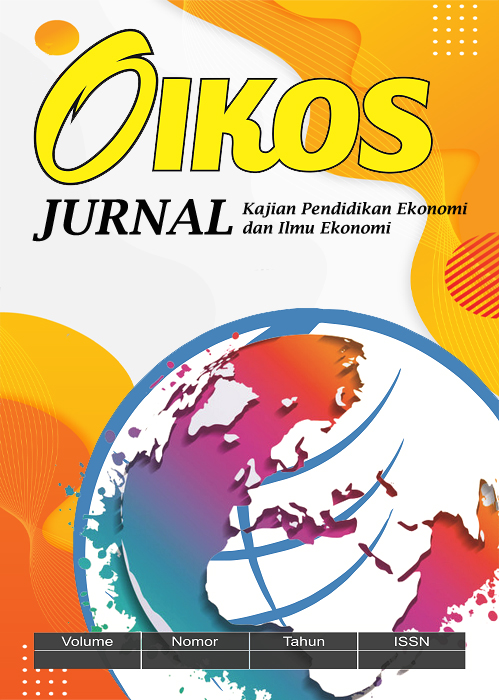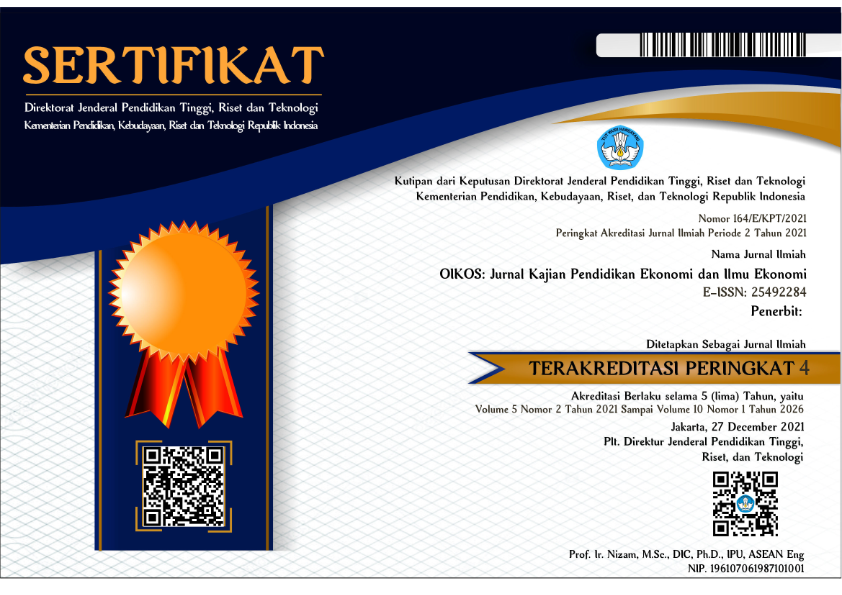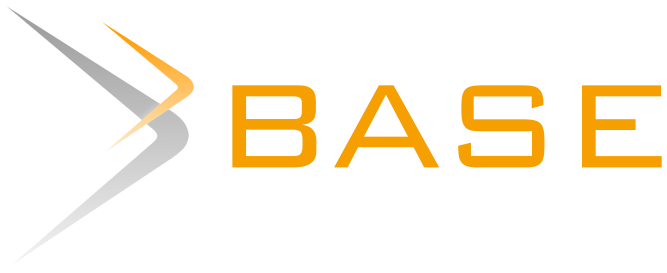THE DYNAMIC OF TRADE AND INVESTMENT IN MINDANAO: CHALLENGES AND OPPORTUNITIES FOR INDONESIAN ECONOMIC DIPLOMACY
English
DOI:
https://doi.org/10.23969/oikos.v8i2.13770Keywords:
Indonesia, Mindanao, diplomasi ekonomiAbstract
Mindanao Island is the second largest island in the Philippines after Luzon with an area of 106,378 km2 bordering the Sulu Sea to the west. With its proximity to Indonesia, it can be said that Mindanao has emerged as a center of attention in the realm of regional trade and investment, attracting Indonesia's interest in expanding its economic footprint. The purpose of this research is to find out about several things related to Indonesia's challenges and opportunities in economic diplomacy in the southern Philippines region, or in the work environment of the Consulate General of the Republic of Indonesia in Davao. The results of this study are that economic diplomacy between Indonesia and Mindanao has opportunities and challenges. The opportunities are increased trade and investment: Mindanao has great potential to become an export market for Indonesian products, such as processed foods, textiles, and electronic products. Indonesia can also invest in Mindanao's leading sectors, such as mining, fisheries, and tourism. Strengthening connectivity: Improved air and sea connectivity between Indonesia and Mindanao will facilitate the movement of goods and services, and boost tourism. Maritime cooperation: Indonesia and Mindanao have vast maritime areas rich in natural resources. Both countries can cooperate in fisheries, aquaculture, and maritime energy. Cultural and educational exchanges: Cooperation in the fields of culture and education can enhance mutual understanding and strengthen relations between the peoples of the two countries.
Downloads
References
Alam, S. (2011). Stretching the Parameters of Diplomatic Protocol: Incursion into Public Diplomacy. Exchange: The Journal of Public Diplomacy, 2(1), 5.
Clerc, P. (2022). Economic intelligence. World information report, 2022, 304-317.
Dumayas, A. (2023). The Structure and Evolution of City System in the Philippines. In Industrial Location and Vitalization of Regional Economy (pp. 137-163). Singapore: Springer Nature Singapore. (https://link.springer.com/chapter/10.1007/978-981-19-8128-9_8)
Indonesia, K. L. N. (2018). Laporan Kinerja. Jakarta: Kementerian Luar Negeri Indonesia.
Indonesia, R. (2020). Rencana pembangunan jangka menengah nasional 2020-2024. Peraturan Presiden Republik Indonesia, 303.
Nuechterlein, D. E. (1976). National interests and foreign policy: A conceptual framework for analysis and decision-making. Review of International Studies, 2(3), 246-266. (https://www.cambridge.org/core/journals/review-of-international-studies/article/abs/national-interests-and-foreign-policy-a-conceptual-framework-for-analysis-and-decisionmaking/3A15B2B5436B3B05FA015026A99CF886)
Rana, K. S. (2007). Economic diplomacy: the experience of developing countries. The New Economic Diplomacy, Decision-Marking and Negotiation in international relations.
Rijal, N. K. (2017). Tantangan Implementasi ASEAN Community: Kasus di Kota Malang. Insignia: Journal of International Relations, 4(01), 53-67.
Ruggie, J. G. (1982). International regimes, transactions, and change: embedded liberalism in the postwar economic order. International organization, 36(2), 379-415.
Thimothy, R. (2016). Mobility of Women Workers from South Asia to the Gulf: Stakeholders' responses. In India migrations reader (pp. 74-88). Routledge India.
Weldes, J. (1996). Constructing national interests. European journal of international relations, 2(3), 275-318.
Downloads
Published
Issue
Section
License
Copyright (c) 2024 OIKOS: Jurnal Kajian Pendidikan Ekonomi dan Ilmu Ekonomi

This work is licensed under a Creative Commons Attribution 4.0 International License.









